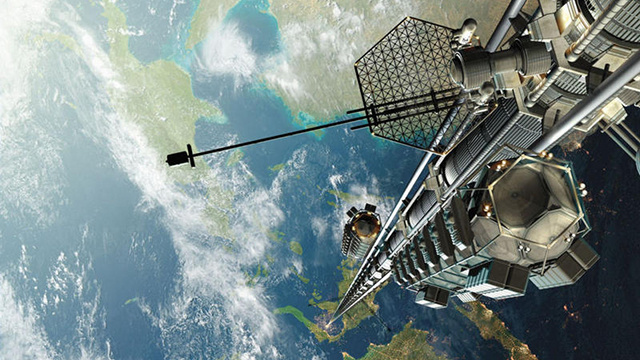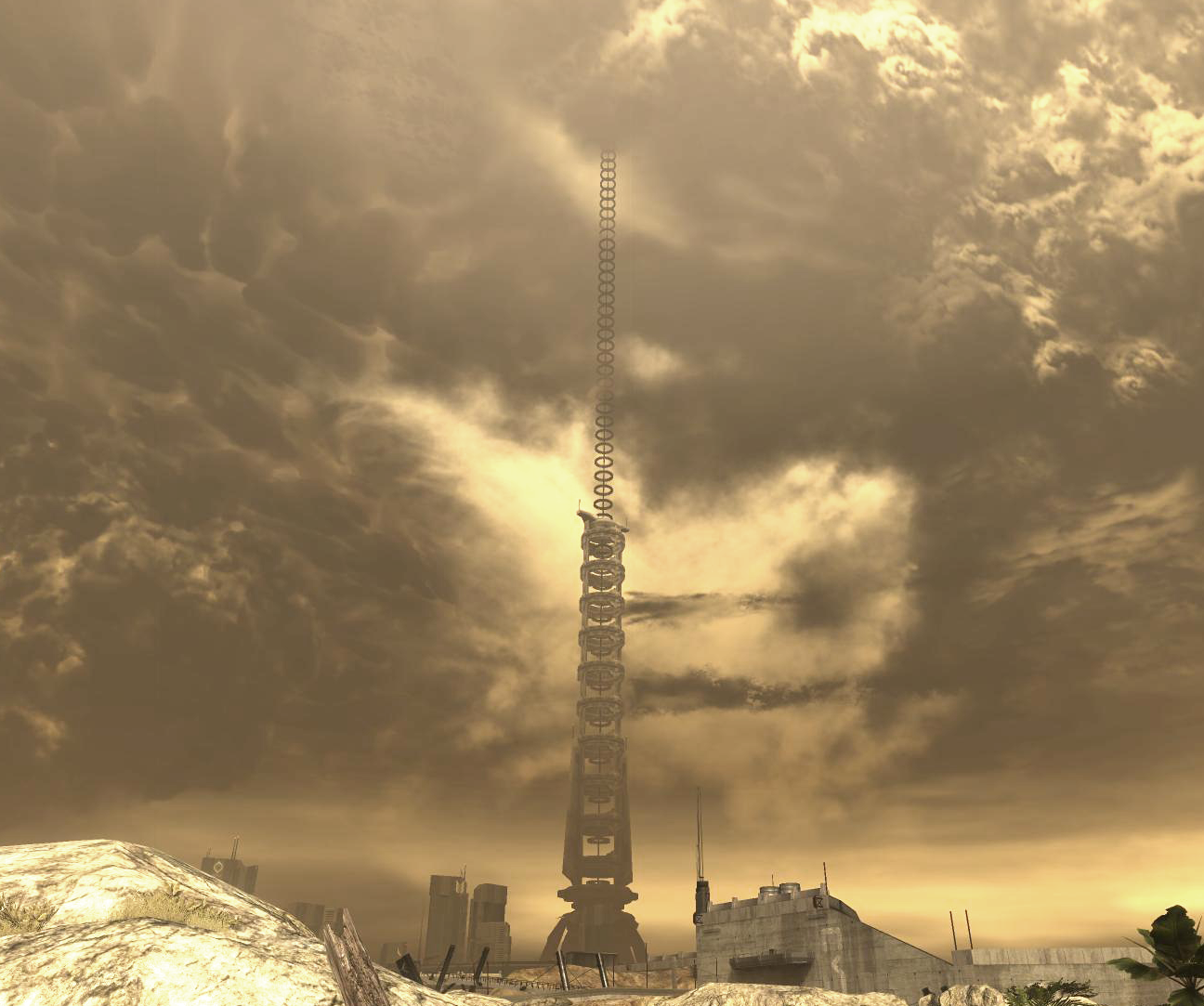[caption caption="io9.com"][/caption]
Currently to transport cargo into space it costs $20,000 for each kilo. That’s a hefty sum for sending food & water for the ISS, satellites and probes for missions. This takes in the many factors like the amount of fuel used, designing the finest rockets with the best technology known to man. And even after everything is perfect there is still a miniscule probability for failure; a loose bolt, atmosphere debris, fluids rapidly shifting changing the center of mass. Will there ever be a cheaper substitute? SpaceX’s recyclable rocket boosters will certainly decrease the average price range. Still, it doesn’t change the fact that space flight is expensive.
"What floor?" "Space Please!"
The idea of space elevator may seem a bit crazy. The highest humans have built is the Burj Khalifa standing at a near kilometer high. Mount Everest is 9 kilometers tall. So building a tower so high it touches the sky, pierces it, then continues upward for several hundreds of kilometers more, is a bit illogical. The interesting thing is that it’s possible. If the tower passes geostationary orbit 35km high the forces of gravity are countered by the centrifugal force of the counterweight at the end of the tower.
Think of it this way, a bucket of water is pulled then spun around. The water wanting to go in a straight direction moves to the back of bucket given enough velocity. So instead of being pulled down by gravity the tower will actually be pulled outward without any additional structural support.
The slight catch is that there is no material strong enough to withstand that much force, except for carbon nanotubes. According to a couple websites, which links I will put down below, carbon nanotubes are 200 times stronger than steel with 5 times the elasticity. Its length to width ratio is 100,000,000. Currently carbon nanotubes isn’t strong enough to support possibly 100,000kN/(kg/m) of strain. More research is being put into the material.
The other problems considering the space elevator is earth’s weather such as Hurricanes and Tornadoes that could ruin the structure. There’s also the possibility of the elevator contacting with space debris stuck in orbit or passing satellites. It could be that the space elevator is built on a ship or movable hovercraft so that in case of danger it could be moved.
With a tower of such we could replace NASA’s space shuttle entirely and simply send astronauts via elevator. After the initial cost of construction it should be smooth sailing profits from there on. Vsauce said in his video that the first country to build a space elevator would control space transport entirely, creating a monopoly with 95% cost effectiveness.
I will end this article with a photo of a space elevator in the fictional game called Halo. The game takes place 40 years into the future. Hopefully in that time we will get to have our own.












